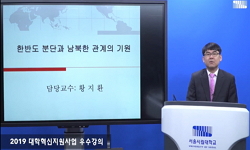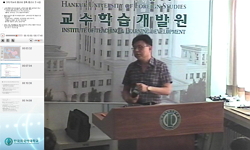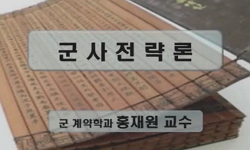This paper deals with the founding process of the ROK Army from the perspective of Americanization in military, meaning the ROK Army's introduction to the U.S. Army's models including training, tactics, professionalism, and military culture. The milit...
http://chineseinput.net/에서 pinyin(병음)방식으로 중국어를 변환할 수 있습니다.
변환된 중국어를 복사하여 사용하시면 됩니다.
- 中文 을 입력하시려면 zhongwen을 입력하시고 space를누르시면됩니다.
- 北京 을 입력하시려면 beijing을 입력하시고 space를 누르시면 됩니다.
https://www.riss.kr/link?id=A77026944
- 저자
- 발행기관
- 학술지명
- 권호사항
-
발행연도
2009
-
작성언어
English
-
주제어
Americanization ; the Cold War ; the ROK Army ; KMAG ; Constabulary ; 냉전 ; 한국군 ; 경비대 ; 군사고문단 ; 미국화
-
KDC
349
-
등재정보
KCI등재
-
자료형태
학술저널
-
수록면
195-222(28쪽)
-
KCI 피인용횟수
2
- 제공처
- 소장기관
-
0
상세조회 -
0
다운로드
부가정보
다국어 초록 (Multilingual Abstract)
The difficulties, nevertheless, were overcome by the US-ROK joint efforts to make their co-project successful. The joint efforts were possible in spite of the different expectations on the ROK Army, because they firmly shared the common interests to block the Communists' expansion in East Asia and to secure the ROK in particular. While defending the ROK firmly, Americans and Koreans in uniform have succeeded to continue to uphold their special relationship, or the so-called US-ROK partnership cemented in blood. This special partnership became the cornerstone of the ROK military' s mission, a bulwark of liberal democracy, during the entire Cold War era.
This paper deals with the founding process of the ROK Army from the perspective of Americanization in military, meaning the ROK Army's introduction to the U.S. Army's models including training, tactics, professionalism, and military culture. The military founding in South Korea, the Bamboo Plan, began as a Cold War project. Soon after the Japanese surrender in August 1945, American troops hurried into the Korean Peninsula and a small number of American officers worked for creation of this indigenous troop while taking charge of organizing, recruiting, training, feeding, and even teaching English to Koreans. The Bamboo Plan, however, encountered many difficulties between American advisors and Korean advisee from the start such as language barriers and racial prejudices. Furthermore, the U.S. government was generally indifferent toward this military force, leading to a lack of the material support that would have made an inherently difficult relationship easier.
The difficulties, nevertheless, were overcome by the US-ROK joint efforts to make their co-project successful. The joint efforts were possible in spite of the different expectations on the ROK Army, because they firmly shared the common interests to block the Communists' expansion in East Asia and to secure the ROK in particular. While defending the ROK firmly, Americans and Koreans in uniform have succeeded to continue to uphold their special relationship, or the so-called US-ROK partnership cemented in blood. This special partnership became the cornerstone of the ROK military' s mission, a bulwark of liberal democracy, during the entire Cold War era.
참고문헌 (Reference)
1 Yu, Jae-hung, "Yu Jae-hung Heokorok: Kuk-dong-yei Se-wol (Memoirs: Unpredictable Time)" Yulyu Munwhasa 1994
2 Fehrenbach, "Transactions, Transgressions, Transformations: American Culture in Western Europe and Japan" Berghahn Books 2000
3 Lee, Young-woo, "The United States and the Formation of the Republic of Korea Army, 1945-1950" Duke University 1984
4 Chung, To-woong, "The Role of the U.S. Occupation in the Creation of South Korean Armed Forces, 1945-1950" Kansas State University 1985
5 Huh, Nam-sung, "The Quest for a Bulwark of Anti-communism: The Formation of the Republic of Korea Army Officer Corps and Its Political Socialization 1945-1950" Ohio State University 1987
6 Regimes, "The Origins of the Korean War: The Roaring of the Cataract, 1947-1950" Princeton University Press 1990
7 Cumings, Bruce, "The Origins of the Korean War: Liberation and the Emergence of Separate Regimes, 1945-1947" Princeton Univ. Press 1981
8 Stueck, William, "The Korean War: An International History" Princeton University Press 1995
9 Korean Institute of Military History, "The Korean War" University of Nebraska Press 2000
10 Blair, Clay, "The Forgotten War: America in Korea 1950-1953" Time Books 1987
1 Yu, Jae-hung, "Yu Jae-hung Heokorok: Kuk-dong-yei Se-wol (Memoirs: Unpredictable Time)" Yulyu Munwhasa 1994
2 Fehrenbach, "Transactions, Transgressions, Transformations: American Culture in Western Europe and Japan" Berghahn Books 2000
3 Lee, Young-woo, "The United States and the Formation of the Republic of Korea Army, 1945-1950" Duke University 1984
4 Chung, To-woong, "The Role of the U.S. Occupation in the Creation of South Korean Armed Forces, 1945-1950" Kansas State University 1985
5 Huh, Nam-sung, "The Quest for a Bulwark of Anti-communism: The Formation of the Republic of Korea Army Officer Corps and Its Political Socialization 1945-1950" Ohio State University 1987
6 Regimes, "The Origins of the Korean War: The Roaring of the Cataract, 1947-1950" Princeton University Press 1990
7 Cumings, Bruce, "The Origins of the Korean War: Liberation and the Emergence of Separate Regimes, 1945-1947" Princeton Univ. Press 1981
8 Stueck, William, "The Korean War: An International History" Princeton University Press 1995
9 Korean Institute of Military History, "The Korean War" University of Nebraska Press 2000
10 Blair, Clay, "The Forgotten War: America in Korea 1950-1953" Time Books 1987
11 Park, Il-Song, "The Dragon from the Stream: The ROK Army in Transition and the Korean War, 1950-1953" Ohio State University 2002
12 Rosenberg, Emily S., "Spreading the American Dream: American Economic and Cultural Expansion, 1890-1945" Hill and Wang 1982
13 Armstrong, Charles, "South Korean and the United States: Is the Love Affair Over?" Japan Focus 2005
14 Stueck, William, "Rethinking the Korean War: A New Diplomatic and Strategic History" Princeton University Press 2002
15 Sawyer, Robert K., "Military Advisors in Korea: KMAG in Peace and War" United States Army Center of Military History 1955
16 Na, Jongnam, "Making Cold War Soldiers: The Americanization of the South Korea Army, 1945-1955" University of North Carolina 2006
17 Lee, Ung-jun, "Lee Ung-jun Jaseojun: Saeng-ae Gu-ship-yun, 1890-1981 (Memoirs: 90 Years of My Life, 1890-1981)" Sunun Kiyumsaupheoi 1982
18 Lee, Hyung-kun, "Lee Hyung-kun Heokorok: Gun-bun Il-bun-yei Weo-gil In-saeng (Memoirs: Lonely Life of the Man Who Has the Service Number One)" Chungang ilbosa 1993
19 Henderson, Gregory, "Korea: The Politics of the Vortex" Harvard University Press 1968
20 Kim, Ung-su, "Interview by Jongnam Na"
21 U.S. Department of the Army, "History of the United States Armed Forces in Korea" Library of Congress 1978
22 Park, Myung-Lim, "Han-kuk Jun-jaeng-yei Bal-bal kwa Ki-won (The Korean War: The Outbreak and Its Origin)" Nanam 1996
23 U.S. Department of the State, "Foreign Relations of the United States, Vol. 6: The British Commonwealth and the Far East, 1945" U.S. Government Printing Office 1977
24 Donnelly, William M., "Coalition Combat: Supporting South Korean Forces" (Spring) : 2001
25 Han, Young-won, "Changgun (Formation of the Military)" Parkyoungsa 1984
26 Pach, Chester J., "Arming the Free World: The Origins of the United States Military Assistance Program, 1945-1950" University of North Carolina Press 1991
동일학술지(권/호) 다른 논문
-
- 고려대학교 일민국제관계연구원
- 최치원(Chi-won Choi)
- 2009
- KCI등재
-
- 고려대학교 일민국제관계연구원
- 이재승(Jae-Seung Lee)
- 2009
- KCI등재
-
- 고려대학교 일민국제관계연구원
- 홍태영(Tai-Young Hong)
- 2009
- KCI등재
-
- 고려대학교 일민국제관계연구원
- 황지환(Jihwan Hwang)
- 2009
- KCI등재
분석정보
인용정보 인용지수 설명보기
학술지 이력
| 연월일 | 이력구분 | 이력상세 | 등재구분 |
|---|---|---|---|
| 2026 | 평가예정 | 재인증평가 신청대상 (재인증) | |
| 2020-01-01 | 평가 | 등재학술지 유지 (재인증) |  |
| 2017-01-01 | 평가 | 등재학술지 유지 (계속평가) |  |
| 2015-05-04 | 학술지명변경 | 외국어명 : 미등록 -> Journal of International Politics |  |
| 2013-01-01 | 평가 | 등재학술지 유지 (등재유지) |  |
| 2010-01-01 | 평가 | 등재학술지 선정 (등재후보2차) |  |
| 2009-01-01 | 평가 | 등재후보 1차 PASS (등재후보1차) |  |
| 2008-01-01 | 평가 | 등재후보학술지 유지 (등재후보1차) |  |
| 2006-01-01 | 평가 | 등재후보학술지 선정 (신규평가) |  |
학술지 인용정보
| 기준연도 | WOS-KCI 통합IF(2년) | KCIF(2년) | KCIF(3년) |
|---|---|---|---|
| 2016 | 0.89 | 0.89 | 0.76 |
| KCIF(4년) | KCIF(5년) | 중심성지수(3년) | 즉시성지수 |
| 0.92 | 0.77 | 1.225 | 0.45 |




 ScienceON
ScienceON DBpia
DBpia







